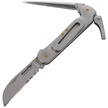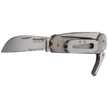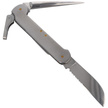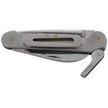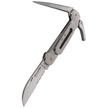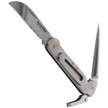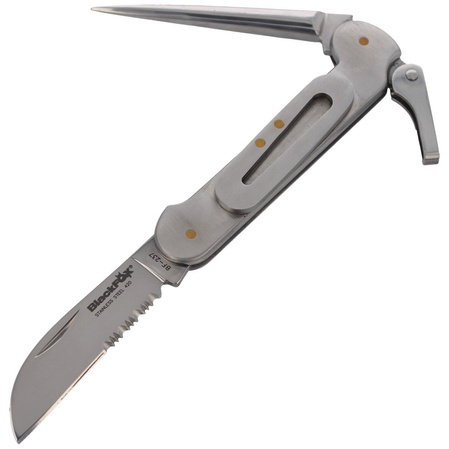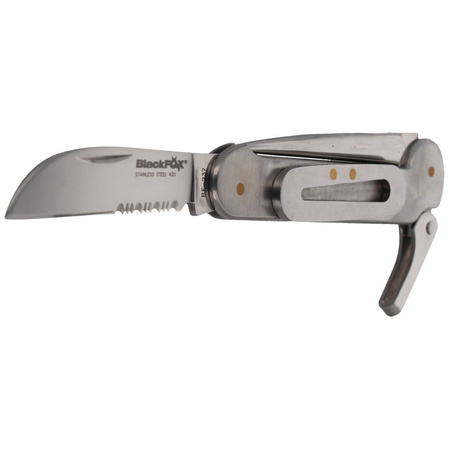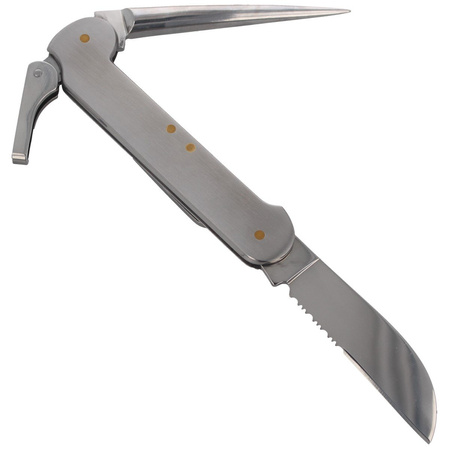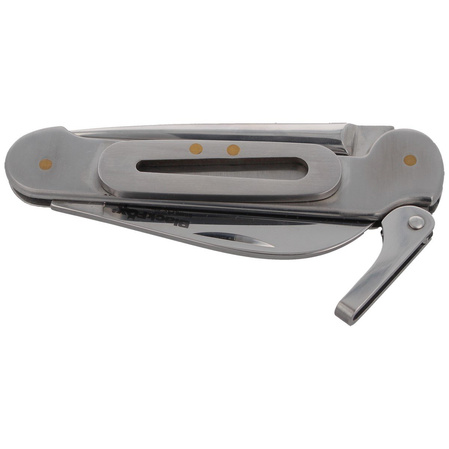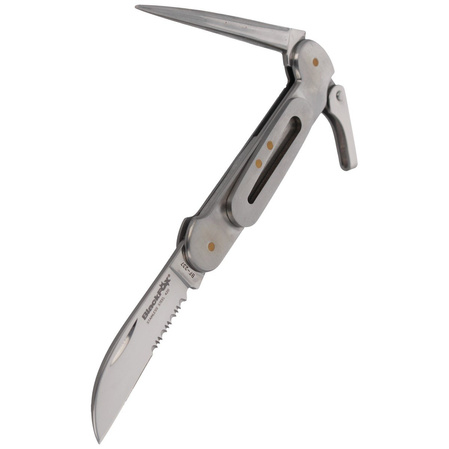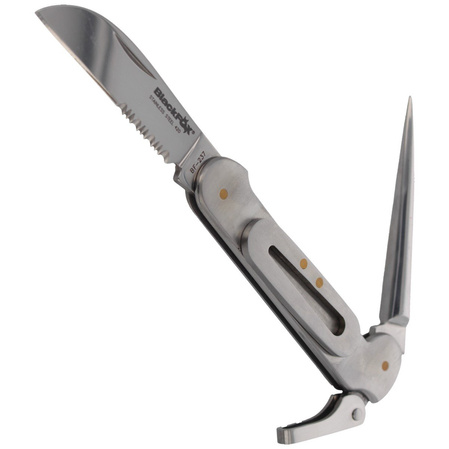BlackFox Sailing Knife 70mm (BF-237)
- Sailing Knife, a captain's knife with shackle and marshmallow by BlackFox. This rigging knife is ideal for a wide range of water sports. It lies securely even in large hands. Number of tools (3), number of functions (5)...
Sailing Knife, a petty officer's knife with a shackle and a marshmallow by the Italian brand BlackFox. A knife for rigging - folding sails - ideal for a wide range of water sports. It lies securely even in large hands. Number of tools (3), number of functions (5).
Blades - additional functions:
70 mm long main blade with saw for cutting hard materials
shackle driver (sailor's spanner) for loosening / tightening shackles
marshal skewer for untangling tight knots, making splices on ropes
other: line holder
Blade - made of corrosion-resistant 420 stainless steel, used in the manufacture of knives in contact with water or moisture. The blade is Full Flat grind. Knife opens with a nail nick, notches on the blade.
Combination Edge - (partially serrated), a combination of a serrated blade for aggressive cutting of hard materials, plastics, fibers and a classic Plain blade for precise cuts. The Combo blade consists of one large and two small alternating teeth, the so-called two-step. This pattern increases the length of the cutting edge by up to 24% compared to a straight blade.
Handle - covered with stainless steel linings allows for a secure grip. In the back of the covers, a cord holder.
Technical data:
Product number: BF-237
Type of steel: AISI 420
Hardness: 54-57 HRC
Blade length: 70.0 mm / 2.76"
Blade thickness: 2.5 mm / 0.10"
Overall length: 180.0 mm / 7.09"
Weight: 165.0 g / 5.82 oz
Cutting edge type: Combo
Blade type: Sheepsfoot
Lock type: SlipJoint
Handle type: Stainless Steel
Manufacturer: Fox Cutlery, Italy
Przeczytaj!
This product is intended for use only by adults with knowledge and experience in handling sharp cutting tools. Improper use of the knife can result in serious injuries. The blade is extremely sharp and can easily cut through skin and tissue; therefore, extra caution should always be exercised while cutting, and hands should be kept away from the cutting edge. To prevent the knife from slipping, it is recommended to cut on a stable, non-slip surface and avoid excessive force, which may cause uncontrolled blade movement.
Leaving the knife on the edge of a table, countertop, or in easily accessible places—especially where children are present—poses a significant safety risk. The knife should always be properly secured after use, ideally by placing it on a stable surface or storing it in designated knife blocks, protective sheaths, or magnetic strips. The knife should never be used for tasks it is not designed for, such as opening cans or prying objects, as this can damage the tool and lead to dangerous accidents.
A dull blade increases the risk of injury, as it requires more force and is more likely to slip from the material being cut. Therefore, it is essential to sharpen the knife regularly to maintain optimal sharpness. Additionally, proper cleaning and drying of the knife are necessary to prevent corrosion and bacterial growth. Periodic inspection of the handle and blade is recommended to check for cracks, chips, or looseness. If any damage is detected, the knife should be repaired or replaced immediately.
When using the knife, focus solely on the task at hand—avoid talking on the phone, watching television, or other distractions while cutting. Ensure proper lighting in the workspace for better visibility and control. Please note that some countries or regions have laws restricting the ownership and carrying of knives. Before purchasing or using this knife, verify that its use is legal in your location according to applicable regulations.
Following these safety guidelines will help ensure safe and effective knife use, minimizing the risk of accidents and extending the lifespan of the tool.

